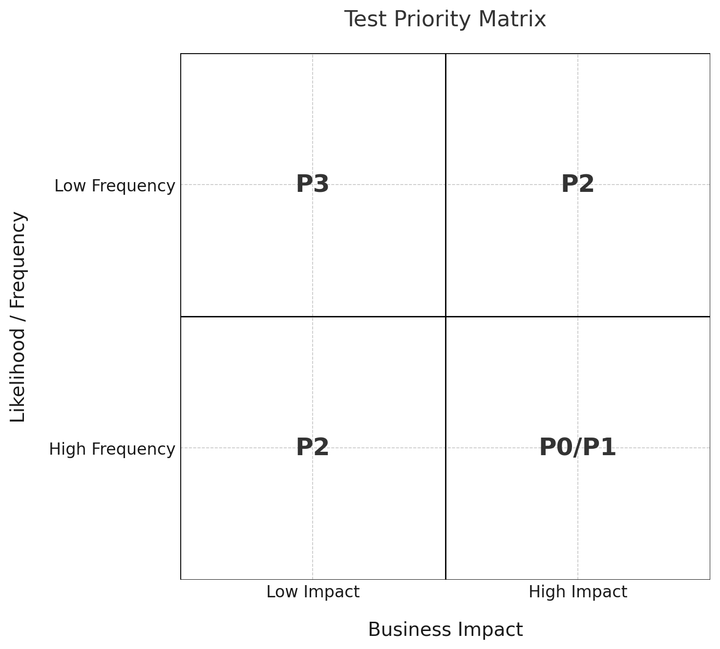Scaling QA Like a Product: Roadmaps, Metrics, and OKR

In many organizations the QA (Quality Assurance) function is still viewed as a cost-center, a reactive gatekeeper who comes in at the end of a sprint and says “Here are the bugs.” But as the scope, speed and complexity of product delivery grows, QA must evolve into a product-oriented organization in its own right. As the VP of Quality Engineering, my goal is to run QA as a product; with a roadmap, with metrics that matter, and with OKRs that align to business outcomes. In this post I’ll share how I’ve approached scaling QA in this way, the key components of this shift, and pitfalls to avoid.
1. Why QA as a Product?
Thinking of QA as a product means shifting our mindset from “we test your code” to “we deliver quality outcomes and mitigate risk proactively, as a service to the business”. This mindset shift has several implications:
- We build a roadmap for QA-capabilities (automation, shift-left, test data pipelines, risk analytics) rather than reacting to build silos.
- We define metrics that show real business value (e.g., escaped defects in production, cycle time for verification, risk reduction) rather than only output metrics (number of test cases, number of bugs raised).
- We set OKRs for the QA organization that align to product, engineering, and business goals (e.g., improving reliability, enabling faster release cadence, reducing cost of defect remediation).
- We measure and iterate, just like a product would: we build, release, learn, improve.
When QA operates this way, it becomes strategic: not just preventing defects, but enabling the business to move faster, with higher confidence and at lower overall cost. The QA team becomes a partner to engineering and product, not only a gate.
2. Building the QA Roadmap
The roadmap is the foundation of running QA like a product. Here’s how I structured it:
a) Vision & Strategy
Define a clear vision: e.g., “Enable at least 95% of code changes to be verified within 2 hours through automation, and reduce escaped defects to less than 0.5 per release cycle.” This sets out where we aim to be in 12-18 months. We then align the QA strategy with business priorities: faster time to market, higher reliability, global expansion, regulatory compliance, etc.
b) Capability clusters
Break down the roadmap into clusters of capabilities. For example:
- Shift-left & testability (embedding QA earlier in SDLC, code reviews, test hooks).
- Test automation & infrastructure (build pipelines, environment automation, service virtualization).
- Risk analytics & metrics (data collection, dashboards, early warning indicators).
- Release & deployment support (canary testing, performance verification, post-release defect triage).
- People & skills (automation engineers, test data engineers, QA operations).
c) Roadmap timeline & prioritization
We prioritize based on business value and risk: what will unblock the fastest, highest-impact improvements? We create a 3-5-8 quarter roadmap: short-term (0-3 quarters) quick wins (e.g., increase automated regression coverage by X%), medium-term (3-8 quarters) transformational items (e.g., self-service test data infrastructure), and long-term (beyond) foundational items (e.g., test-operational analytics platform).
d) Ownership & governance
This roadmap lives in a shared tool (e.g., Jira or Azure DevOps Epic board) with clear owners. We review quarterly, adjust as input changes (new product strategy, acquisitions, regulatory shifts). QA leadership presents the roadmap to stakeholders (product, engineering, business leadership) to get alignment and buy-in.
3. Establishing Metrics That Matter
Metrics are the lifeblood of running QA like a product. But the key word here is matter; metrics must tie to business outcomes.
Focus on outcomes, not just outputs. As one source points out, QA engineers should identify metrics like defect detection and resolution time, test coverage, and customer satisfaction, not just “number of test cases executed”. larksuite.com+2Tability+2
Here are categories of metrics we track:
- Quality of deliveries: escaped defects (defects found in production), severity of defects, mean time to detect/resolve defects.
- Process efficiency: average time for QA cycle (code complete to sign-off), automation pass rate, regression cycle time.
- Test coverage and maturity: percentage of automated vs manual tests, coverage of critical modules, test environment availability.
- Business impact: customer reported defects, Net Promoter Score (NPS) trends tied to product quality, cost of defect remediation.
- Risk indicators: number of high-risk changes (e.g., security, compliance), unresolved test gaps at release, technical debt flagged.
The key is to build a dashboard (or set of dashboards) that present these metrics to engineering leadership, product leadership, and business leadership; showing QA as a strategic lever, not just a support function. A roadmap for metrics reporting helps build trust and transparency. metridev.com
4. Using OKRs to Align and Scale
While metrics show where we are, OKRs (Objectives & Key Results) define where we want to go. Running QA like a product means setting clear, ambitious but measurable objectives for the QA organization. For example:
Objective: Enable the organization to release new features with zero critical bugs in production.
Key Results:
- KR1: Reduce escaped critical defects to < 0.3 per release by Q4.
- KR2: Achieve > 90% of high-priority test cases automated.
- KR3: Reduce average QA cycle time from 72 hrs to 24 hrs.
The process for defining QA OKRs is similar to engineering teams: anchor objectives to business impact, define 2-4 measurable key results per objective, iterate. Jellyfish+2Mooncamp+2
We cascade OKRs through the QA organization: QA leadership sets top-level OKRs aligned with business goals; team leads define their own OKRs nested under the top-level; individuals may define personal OKRs linked to the team’s. We review progress weekly or bi-weekly at stand-ups, and formally every quarter.
5. Culture, Governance, and Continuous Improvement
Running QA as a product also demands cultural change and governance.
- Stakeholder engagement: QA roadmap and metrics should be communicated to product and engineering leadership regularly. QA must be viewed as a partner.
- Governance: Quarterly roadmap reviews, monthly metric reviews, post-release retrospectives. Identify lessons from every defect escaped, every deployment regression.
- Continuous improvement: Use the data (from metrics) to drive the next roadmap iteration. If our metric shows test automation pass rate slipping, we prioritize automation infrastructure in the next roadmap cycle.
- Skill development: Building the QA capability means recruiting and developing automation engineers, test operations engineers, test data engineers, and risk analysts. It also involves shifting QA mindset from “break software” to “enable software”. This imperative is explicitly cited in roles like QA management in engineering. The GitLab Handbook
6. Pitfalls and How to Avoid Them
a) Metrics overload - Too many metrics mean nobody pays attention. Focus on the critical few.
b) Output-focused OKRs - Avoid objectives like “run X number of tests” or “complete Y test cases”. Instead focus on outcomes (e.g., “reduce production defects by 20%”). This aligns better with business value. Oboard+1
c) Roadmap neglect - A roadmap that isn’t reviewed or aligned with product/engineering often becomes irrelevant. Maintain governance.
d) Lack of stakeholder alignment - If QA operates in isolation, other teams may still view QA as a bottleneck. Ensure QA roadmap ties to product/engineering roadmaps.
e) Ignoring team change management - Shifting QA into a product-mindset involves mindset change, new skills and sometimes restructuring. Invest in training, communication, and leadership.
This Won't be Easy
Scaling QA like a product is not easy; it’s a strategic journey. But when done well, the benefits are compelling: faster time to market with higher confidence, fewer escaped defects, better alignment between QA and the business, and a culture of continuous improvement.
As QA leadership, our job is to set the vision, build the roadmap, define the metrics that matter, set ambitious OKRs, and govern the process. When QA becomes an enabler rather than a gatekeeper, we unlock tremendous value.
If you’re leading a QA organization today and your QA function still feels reactive, consider these questions:
- Do we have a QA roadmap with clear milestones for capability build-out?
- Are the metrics we track tied to business outcomes, not just test counts?
- Do our OKRs reflect outcome ambitions rather than activity targets?
- Are stakeholders product/engineering/business aware of and engaged with our QA roadmap and metrics?
- Are we iterating and improving the QA product based on data and feedback?
If the answer is “not yet” or “somewhat”, then you have fertile ground to evolve. Because quality doesn’t just happen; it is built, measured, and scaled like a product.



Comments ()